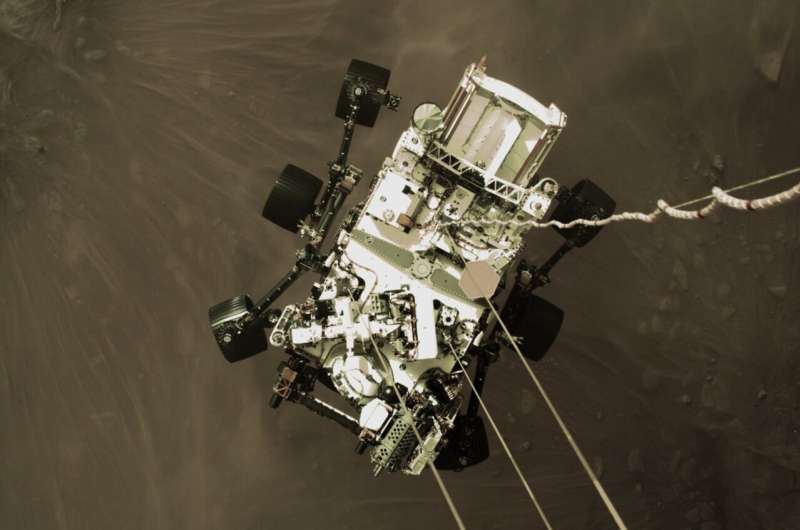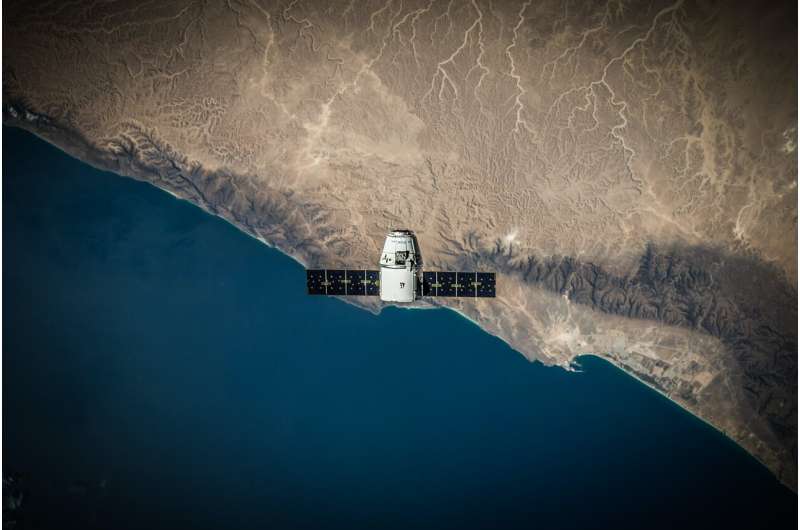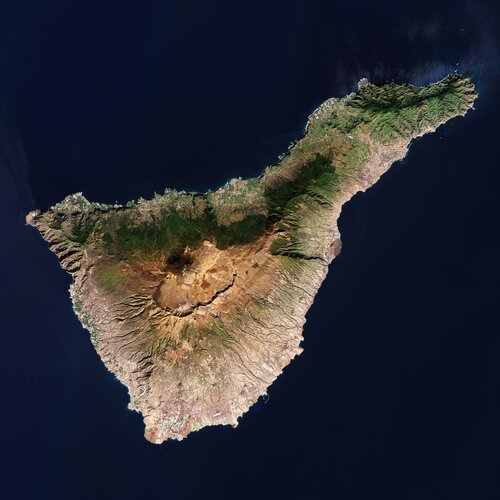
Copernical Team
Northrop Grumman launches cargo ship to International Space Station
 A fresh supply of 8,300 pounds of scientific investigations and cargo launched from NASA's Wallops Flight Facility in Virginia at 12:40 p.m. EST on Saturday, Feb. 19, aboard a Northrop Grumman Cygnus resupply spacecraft, and is now traveling to the International Space Station.
The Cygnus spacecraft, which was launched on an Antares rocket, is scheduled to arrive at the space station around
A fresh supply of 8,300 pounds of scientific investigations and cargo launched from NASA's Wallops Flight Facility in Virginia at 12:40 p.m. EST on Saturday, Feb. 19, aboard a Northrop Grumman Cygnus resupply spacecraft, and is now traveling to the International Space Station.
The Cygnus spacecraft, which was launched on an Antares rocket, is scheduled to arrive at the space station around China's Chang'e-4 discovers glass globules on far side of moon
 The Yutu-2 lunar rover of China's Chang'e-4 mission has discovered two macroscopic translucent glass globules during its exploration of the far side of the moon, which could potentially help reveal the moon's early impact history.
According to a study published in Science Bulletin, the Yutu-2 rover captured images of two translucent globules using its panoramic camera.
No composition
The Yutu-2 lunar rover of China's Chang'e-4 mission has discovered two macroscopic translucent glass globules during its exploration of the far side of the moon, which could potentially help reveal the moon's early impact history.
According to a study published in Science Bulletin, the Yutu-2 rover captured images of two translucent globules using its panoramic camera.
No composition Brains of cosmonauts get 'rewired' to adapt to long-term space missions, study finds
 A new study published in Frontiers in Neural Circuits is the first to analyze the structural connectivity changes that happen in the brain after long-duration spaceflight. The results show significant microstructural changes in several white matter tracts such as the sensorimotor tracts. The study can form a basis for future research into the full scope of brain changes during human space explor
A new study published in Frontiers in Neural Circuits is the first to analyze the structural connectivity changes that happen in the brain after long-duration spaceflight. The results show significant microstructural changes in several white matter tracts such as the sensorimotor tracts. The study can form a basis for future research into the full scope of brain changes during human space explor A Sol in the Life of a Rover
 What does Percy do all day? A Martian day- or Sol- is 24 hours and 37 minutes long, and while every Sol is different, each one is packed full of exciting science activities, observations, and discoveries! Let's follow Percy on Sol 345 (February 8th, 2022) to catch a glimpse into the daily life of a Martian explorer.
Percy woke up early in the morning at 02:07 LMST (Local Mean Solar Time on
What does Percy do all day? A Martian day- or Sol- is 24 hours and 37 minutes long, and while every Sol is different, each one is packed full of exciting science activities, observations, and discoveries! Let's follow Percy on Sol 345 (February 8th, 2022) to catch a glimpse into the daily life of a Martian explorer.
Percy woke up early in the morning at 02:07 LMST (Local Mean Solar Time on Webb team brings 18 dots of starlight into hexagonal formation

The James Webb Space Telescope team continues to make progress in aligning the observatory's mirrors. Engineers have completed the first stage in this process, called "Segment Image Identification." The resulting image shows that the team has moved each of Webb's 18 primary mirror segments to bring 18 unfocused copies of a single star into a planned hexagonal formation.
With the image array complete, the team has now begun the second phase of alignment: "Segment Alignment." During this stage, the team will correct large positioning errors of the mirror segments and update the alignment of the secondary mirror, making each individual dot of starlight more focused.
NASA's Perseverance celebrates first year on Mars by learning to run

NASA's Perseverance rover has notched up a slew of firsts since touching down on Mars one year ago, on Feb. 18, 2021, and the six-wheeled scientist has other important accomplishments in store as it speeds toward its new destination and a new science campaign.
Weighing roughly 1 ton (1,025 kilograms), Perseverance is the heaviest rover ever to touch down on Mars, returning dramatic video of its landing. The rover collected the first rock core samples from another planet (it's carrying six so far), served as an indispensable base station for Ingenuity, the first helicopter on Mars, and tested MOXIE (Mars Oxygen In-Situ Resource Utilization Experiment), the first prototype oxygen generator on the Red Planet.
Perseverance also recently broke a record for the most distance driven by a Mars rover in a single day, traveling almost 1,050 feet (320 meters) on Feb.
100 days of Cosmic Kiss mission

On 11 November 2021, ESA astronaut Matthias Maurer was launched to the International Space Station for his first mission, Cosmic Kiss. Around 100 days later, we reflect on some highlights from space.
Matthias flew to the Station on a SpaceX Crew Dragon alongside NASA astronauts and fellow first-time fliers Kayla Barron and Raja Chari, and NASA spaceflight veteran Tom Marshburn. Collectively known as Crew-3, they were welcomed as members of Expedition 66 by Commander Anton Shkaplerov, cosmonaut Pyotr Dubrov and NASA's Mark Vande Hei.
While in orbit, Matthias is supporting over 35 European and many more international experiments. The outcomes of these experiments will advance our knowledge in areas ranging from human health to materials science, physics, Earth observation, technology development and more.
Matthias is expected to spend approximately six months in orbit and there are many more highlights to come. Find out more about the science he's supported to date in this 100 days of Cosmic Kiss science round-up.
Explore further
How NASA plans to destroy the International Space Station, and the dangers involved

NASA has announced plans for the International Space Station (ISS) to be officially decommissioned in 2031. After dozens of launches since 1998 got the station up and into orbit, bringing it down will be a feat of its own—the risks are serious if things go wrong.
NASA's plans for the decommissioning operation will culminate in a fiery plunge into the middle of the Pacific Ocean—a location called Point Nemo, also known as the "spacecraft graveyard," the furthest point from all civilisation.
Finding Point Nemo will be the final stop in a complex and multi-staged mission to transition the operations of the ISS to new commercial space stations, and to bring the remaining structure safely down to Earth.
Originally commissioned for a 15-year lifespan, the ISS is outliving all expectations. It has already been in operation for 21 years, and NASA has given the go-ahead for one more decade, thereby doubling its total planned time in orbit.
Purpose of the ISS
Gateway virtual reality session
 Image:
Gateway virtual reality session
Image:
Gateway virtual reality session Week in images: 14 - 18 February 2022

Week in images: 14 - 18 February 2022
Discover our week through the lens
